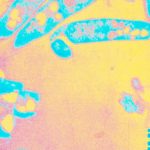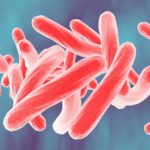Link to Pubmed [PMID] – 19863437
J. Infect. Dis. 2009 Dec;200(11):1675-84
Buruli ulcer disease (BUD) is an emerging human disease caused by infection with Mycobacterium ulcerans, which leads to the development of necrotic skin lesions. The pathogenesis of the ulcer is closely associated with the production of mycolactone, a diffusible cytotoxin with immunomodulatory properties. To identify immunological correlates of BUD, we performed a broad screen of inflammatory mediators in serum samples and stimulated whole-blood supernatants of patients. We found that patients with active ulcers displayed a distinctive profile of immune suppression, marked by the down-modulation of selected chemokines and an impaired capacity to produce Th1, Th2, and Th17 cytokines on stimulation with mitogenic agents. These immunological defects were induced early in the disease and resolved after anti-BUD therapy, establishing their association with the presence of M. ulcerans. Interestingly, some of the defects in cytokine and chemokine response could be mimicked in vitro by incubation of CD4(+) peripheral blood lymphocytes with mycolactone. Our findings support the hypothesis that mycolactone contributes to bacterial persistence in human hosts by limiting the generation of adaptive cellular responses. Moreover, we identified immunological markers of BUD, which may be helpful for confirmatory diagnosis of the disease and, especially, for monitoring the response to antibiotic treatment.


